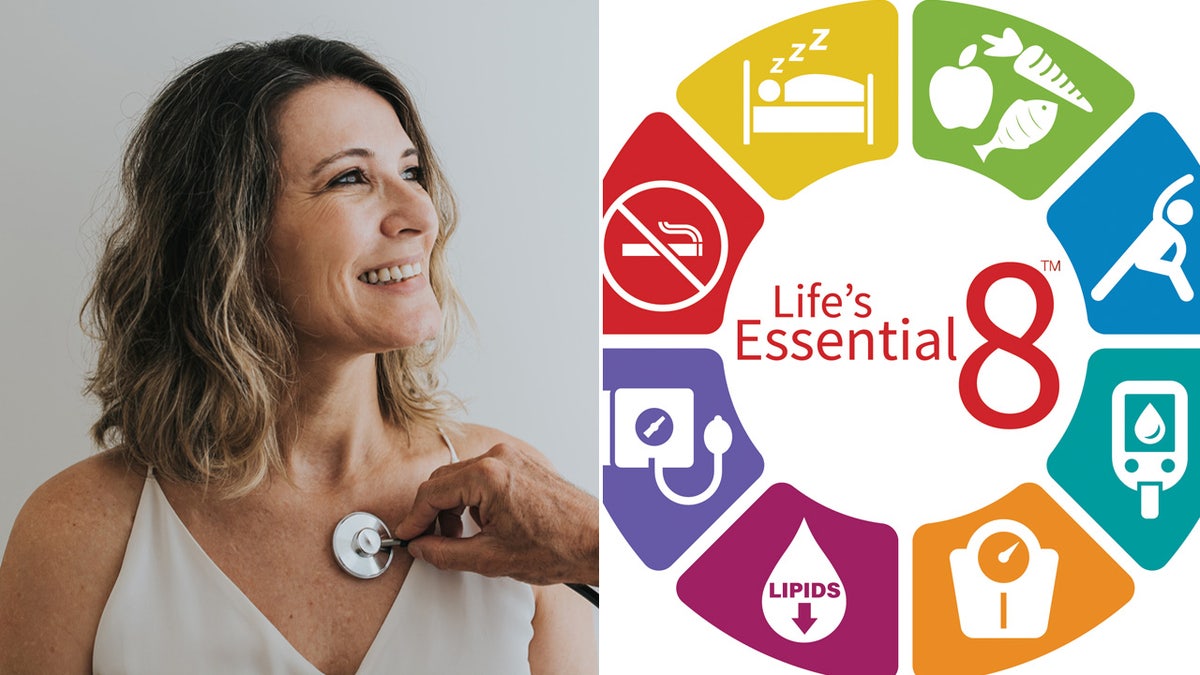One in five women between ages 55 and 75 will experience a stroke in their lifetime, according to the American Heart Association.
There are two main types of strokes.
With an ischemic stroke, a blockage prevents blood from flowing properly to the brain. With a hemorrhagic stroke, a blood vessel bursts in the brain and causes bleeding, which damages brain cells.
While some risk factors such as age, race and family history can’t be changed, others can be mitigated through healthy lifestyle choices.
DOG ALERTS FAMILY, SAVES TEXAS TEENAGER FROM LIFE-THREATENING STROKE: ‘KEEPING GUARD’
Parag Shah, M.D., a cardiologist who practices at Brooks Rehabilitation in Jacksonville, Florida, shared some specific tips about how women can reduce their risk.
Here are five tips.

Parag Shah, M.D., a cardiologist who practices at Brooks Rehabilitation in Jacksonville, Florida, shared specific tips about how women can reduce their risk of stroke. (Dr. Parag Shah)
1. Avoid air pollution
Research has shown that air pollution tends to impact women more than men in terms of inflammation, infection and heart disease.
CDC WARNS OF EXTREME HEAT DANGERS AMID ‘RECORD-BREAKING HIGH TEMPERATURES’
“According to a recent review, elevated levels of ambient air pollution — even just short-term exposure — can increase the likelihood of strokes,” said Shah, who specializes in stroke rehabilitation.
“Health experts recommend checking the air quality in your area and, on high-pollution days, limiting time outside, turning on exhaust fans in kitchens and bathrooms, and using an air purifier in the home,” he also said.
2. Embrace the Mediterranean diet
The Mediterranean diet — a plant-based nutrition plan that mimics the regional cuisines of the countries along the Mediterranean Sea, such as Italy and Greece — can reduce the health risks associated with strokes, according to Shah.
“Current research on preventing strokes is exploring an array of lifestyle factors,” he told Fox News Digital.

While some risk factors — such as age, race and family history — can’t be changed, others can be mitigated through healthy lifestyle choices. (iStock)
“This includes the Mediterranean diet, which highlights the consumption of fruits, vegetables, whole grains, nuts, olive oil and foods rich in omega-3 fatty acids like fatty fish, walnuts and flaxseed.”
MEDITERRANEAN, MIND DIETS SHOWN TO REDUCE SIGNS OF ALZHEIMER’S IN THE BRAIN, STUDY FINDS
3. Practice tai chi and yoga
Practicing exercises that promote heart health and lessen stress can help reduce the possibility of stroke, Shah suggested.

Practicing exercises that promote heart health and reduce stress can help reduce the possibility of stroke, a doctor said. (iStock)
“Participating in physical activities like yoga, tai chi and strength training, while also giving importance to mindfulness techniques such as meditation and deep breathing exercises, could provide additional advantages in lowering the risk of strokes,” he told Fox News Digital.
4. Know the less common signs of stroke
Sudden confusion, difficulty understanding, slurred speech, double vision, and numbness or weakness, especially on one side of the body, are often overlooked signs of strokes, Shah warned.
TIAS AND MINI-STROKE RISKS: CARDIOLOGIST SHARES WARNING SIGNS AND PREVENTION TIPS
“Recognizing these signs is crucial, because quick identification and immediate medical attention greatly enhance the chances of recovery for stroke patients,” he said.
5. Understand the hidden causes
Beyond the more obvious “textbook” stroke symptoms, there are some warning signs that tend to be overlooked until it’s too late.
“Factors like pregnancy, giving birth and hormonal changes such as menopause can heighten the likelihood of having a stroke,” Shah told Fox News Digital.

The use of oral contraceptives and hormone therapy can also raise the risk of stroke, doctors advised. (iStock)
The use of oral contraceptives and hormone therapy can also raise this risk, the doctor added, as can hidden biological factors that make women more susceptible.
“Scheduling regular health check-ups and staying knowledgeable about stroke symptoms and prevention methods are essential for maintaining good health,” Shah said.
In addition, know ‘Life’s Essential 8’
“Preventing most strokes is similar to the prevention of heart attacks,” Dr. Laxmi Mehta, a cardiologist and director of preventative cardiology and women’s cardiovascular health at The Ohio State University Wexner Medical Center, told Fox News Digital.
In her practice, Mehta typically recommends following the American Heart Association’s Life’s Essential 8, which provides steps to improve or maintain cardiovascular health.
These include four healthy behaviors and four health factors, as listed below.

“Life’s Essential 8” consists of four healthy behaviors and four health factors. (iStock/American Heart Association)
1. Quit tobacco. Avoid cigarettes, vaping and other nicotine products, which have been proven to increase the risk of strokes and heart attacks.
2. Eat better. Following a healthy eating pattern that includes plenty of fresh fruits and veggies, whole grains, lean protein, nuts and seeds can reduce stroke risk.
3. Be more active. Experts recommend participating in 150 minutes of moderate intensity or 75 minutes of vigorous physical activity weekly.
CLICK HERE TO SIGN UP FOR OUR HEALTH NEWSLETTER
4. Get healthy sleep. Adults should aim for seven to nine hours of sleep per night to reduce stroke risk, according to experts.
5. Manage blood pressure. A “normal” blood pressure is defined as a systolic pressure of less than 120 and a diastolic pressure of less than 80, according to the National Institutes of Health.

Following a healthy eating pattern that includes plenty of fresh fruits and veggies, whole grains, lean protein, nuts and seeds can reduce stroke risk. (iStock)
6. Manage cholesterol. High cholesterol levels have a proven link to stroke risk. A healthy range for LDL (“bad”) cholesterol is 100 mg/dL or lower, as published in the Journal of the American College of Cardiology.
CLICK HERE TO GET THE FOX NEWS APP
7. Manage blood sugar. Excessive levels of glucose in the blood can increase the risk of fatty deposits or clots, which are a factor in strokes.
8. Achieve and maintain a healthy weight. Being overweight or obese is one of the biggest risk factors and is linked to nearly one in five strokes, according to the World Stroke Organization.
For more Health articles, visit www.foxnews.com/health.

